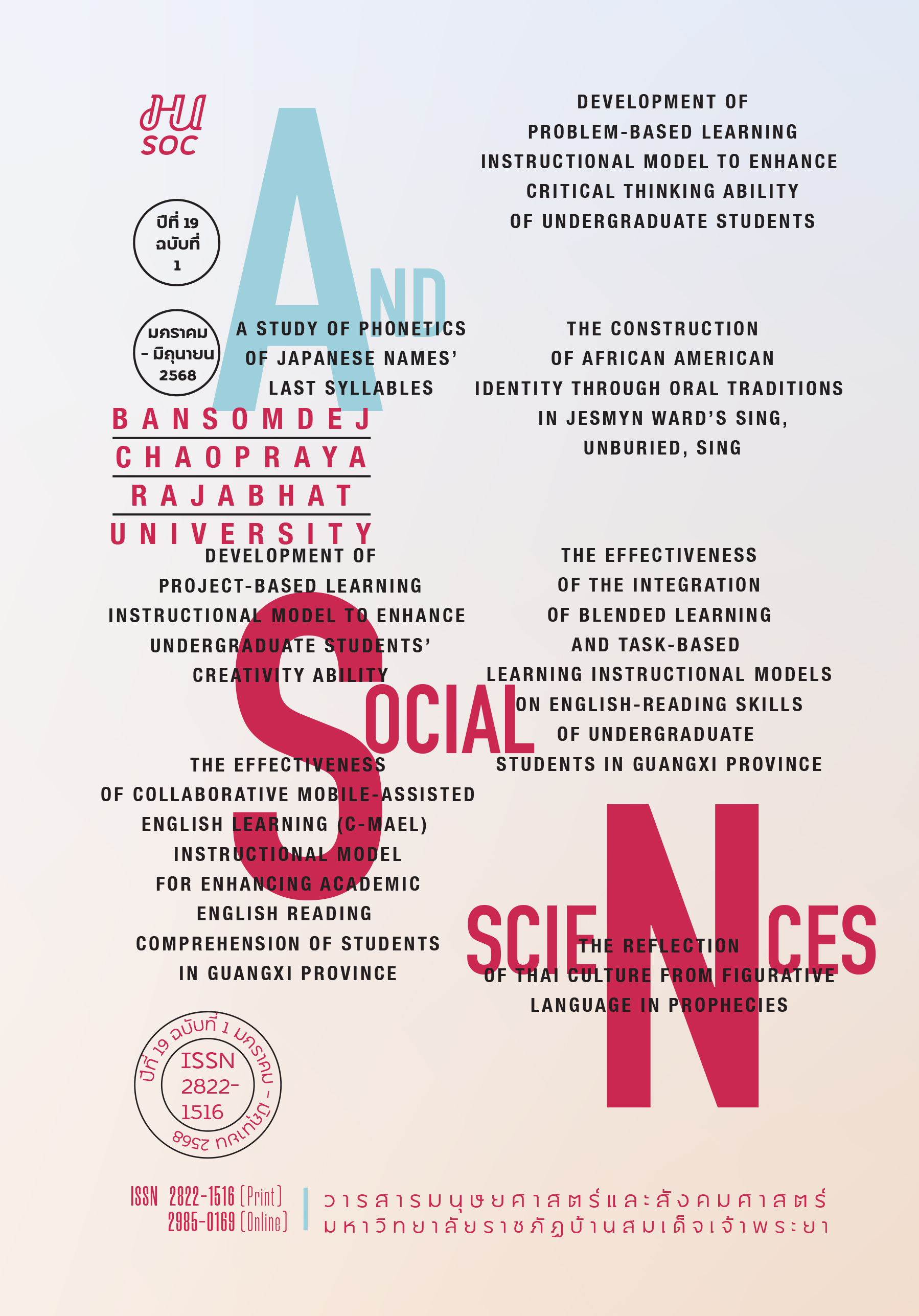แนวทางในการลดปริมาณการฟ้องคดีล้มละลาย
คำสำคัญ:
กฎหมายล้มละลาย , ลูกหนี้บุคคลธรรมดา, ล้มละลายโดยสมัครใจบทคัดย่อ
บทความนี้มีวัตถุประสงค์เพื่อเสนอเป็นแนวทางในการลดปริมาณการฟ้องคดีล้มละลายโดยศึกษาหลักเกณฑ์จำนวนหนี้ในการฟ้องคดีล้มละลายและการให้โอกาสลูกหนี้บุคคลธรรมดาเข้าสู่กระบวนการพิจารณาเกี่ยวกับการฟื้นฟูฐานะของลูกหนี้ จากการศึกษาพบว่าหลักเกณฑ์การกำหนดจำนวนหนี้กฎหมายล้มละลายที่เจ้าหนี้ได้ฟ้องลูกหนี้บุคคลธรรมดาเป็นหนี้เจ้าหนี้คนเดียวหรือหลายคนไม่น้อยกว่าหนึ่งล้านบาท ลูกหนี้นิติบุคคลเป็นหนี้เจ้าหนี้คนเดียวหรือหลายคนไม่น้อยกว่าสองล้านบาท ซึ่งการกำหนดจำนวนหนี้ ที่เจ้าหนี้มีสิทธิฟ้องลูกหนี้ให้ล้มละลายไม่เหมาะสมกับสภาพเศรษฐกิจและสังคมในปัจจุบันประกอบกับการพิจารณาเกี่ยวกับการฟื้นฟูฐานะลูกหนี้บุคคลธรรมดาเป็นการเปิดโอกาสให้ลูกหนี้บุคคลธรรมดาได้ขอฟื้นฟูสภาวะทางการเงินทำให้ไม่ต้องถูกฟ้องคดีหรือถูกเจ้าหนี้ฟ้องให้เป็นบุคคลล้มละลาย แต่หลักเกณ์ดังกล่าวได้มีการกำหนดจำนวนหนี้ขั้นต่ำในการขอฟื้นฟูฐานะของลูกหนี้บุคคลธรรมดาทำให้ลูกหนี้ไม่สามารถเข้าสู่กระบวนการดังกล่าวได้อย่างเต็มที่ ดังนั้น นำไปสู่แนวทางในการลดปริมาณการฟ้องคดีล้มละลาย ซึ่งประกอบด้วย (1) ทบทวนการกำหนดจำนวนหนี้ที่เจ้าหนี้ฟ้องลูกหนี้บุคคลธรรมดาและลูกหนี้นิติบุคคลให้เหมาะสมกับบริบทกับปัจจุบัน (2) พิจารณาถึงจำนวนหนี้ขั้นต่ำที่ลูกหนี้สามารถร้องขอเข้าสู่กระบวนการพิจารณาเกี่ยวกับการฟื้นฟูฐานะของลูกหนี้ที่เป็นบุคคลธรรมดาโดยไม่มีการกำหนดจำนวนหนี้ขั้นต่ำเพื่อให้ลูกหนี้เข้าสู่กระบวนการเริ่มต้นคดีด้วยความสมัครใจโดยไม่ต้องถูกฟ้องเป็นคดีล้มละลาย
References
ILaw. (2022). Offering alternative pathways for debtors to ‘restore financial stability’ without the necessity of undergoing bankruptcy proceedings. Retrieved Febuary 15, 2024. https://www.ilaw.or.th/articles/5429. [In Thai]
Intarawiset, N., Nilbai, T, Thongphat, T., & Antarasena. A. (2022). The Effect of Household Socio-Economic Factors on Household Debt in Thailand. Journal of Management Sciences Suratthani Rajabhat University, 9(1), 115–138. Retrieved from https://so03.tcithaijo.org/index.php/msj/article/view/254459 [In Thai]
Jaiyen, P., & Choochuna, D. (2023). Household Debt Crisis of Thailand In The Global Economic Recession Age: Problem And Solution. Journal of Buddhist Innovation and Management, 6(4), 213. Retrieved https://so06.tcithaijo.org/index.php/bim/article/view/261924 [In Thai]
Kerd-int, N., Wongart, K., & Bodeerat, C. (2021). Remedial measures of Government for Those affecting the Spred of COVID 2019. Journal of Roi Kaensarn Academi, 6(11), 259–272. Retrieved from https://so02.tci-thaijo.org/index.php/JRKSA/article/view/250385 [In Thai]
Khunta, C., & Tangtrongpairoj, S. (2021). Thai Household Debts And The Sustainable Solution. Journal of Liberal Arts and Management Science Kasetsart University, 8(1), 131-145. [In Thai]
Kongchuen, A. (2022). Filing Petition And Voluntary Bankruptcy Process For Individual Debtors In Thailand. [Master’s thesis, Sripatum University]. [In Thai]
Lakarnchua, P. (2020). The right to enter into voluntary bankruptcy proceedings for individual debtors. Office of the Court of Justice. Retrieved Febuary 10, 2024. https://library.coj.go.th/pdf-view.html?fid=14610&table=files_biblio. [In Thai]
Legal Execution. (2023). International Conference on Voluntary Insolvency and SMEs or Individual Reorganization Procedure: Debtors’ Option to Restart. Retrieved Febuary 18, 2024. file:///C:/Users/Shin/Downloads/Report-of-the-International-Conference-2023-Final%20(2).pdf
Lohitanon, M. (2016). Commencement Of Insolvency Proceeding. [Master’s thesis Thammasat University]. [In Thai]
Manager. (2017). Twenty years of the Tom Yum Kung crisis From business debt to household debt. Retrieved January 30, 2024. https://www.landactionthai.org/2012-05-18-03-24-45/article/item/1913-20170703-new7.html [In Thai]
National Housing Authority, (2018). Simulated Learning Development Museum for Residential Living. Retrieved January 18, 2024. http://housingvm.nha.co.th/VM_7.html [In Thai]
Panichwong, P. (2000). Explanation: Bankruptcy law. [In Thai]
Rathamarit, N. (2006). Tom Yum Kung Crisis. King Prajadhipok’s Institute. Retrieved January 30, 2024. http://wiki.kpi.ac.th/index.php?title=วิกฤตต้มยำกุ้ง [In Thai]
Sonjai, P (2022). The concept of assisting an individual debtor through bankruptcy proceeding. Panyapiwat Journal, 14(3). 112-134. [In Thai]
Tantihapakul, T. (2017). Factors that Impact the Delinquently in Consumer Loans of Commercial Banks and Non-bank Financial Institutions in Thailand. [Master’s thesis, Chulalongkorn University]. [In Thai]
Teeravechakul, K. (2013). Explanation: Bankruptcy and rehabilitation law. Author. [In Thai]
TTB Analytics. (2024). The projected increase in household debt in Thailand by the end of 2567 (B.E.) to approximately 91.4% of GDP signals concerns for the future, with three key factors contributing to this worrying trend. Retrieved January 31, 2024. https://media.ttbbank.com/5004/tmba_economic_analysis/5707-highlight-desktop-th.pdf [In Thai]
Uttabolyukol, M. (2014). An alternative to Bankruptcy: Case Study Of Individuals’s Rehabilitation. [Master’s thesis Sripatum University]. [In Thai]
Wayupap, P. (2016). Civil and Commercial Coad: Obligation. (11st ed). Institute Of Legal Education Of The Thai Bar. [In Th
Downloads
เผยแพร่แล้ว
How to Cite
ฉบับ
บท
License
Copyright (c) 2024 คณะมนุษยศาสตร์และสังคมศาสตร์ มหาวิทยาลัยราชภัฏบ้านสมเด็จเจ้าพระยา

This work is licensed under a Creative Commons Attribution-NonCommercial-NoDerivatives 4.0 International License.



